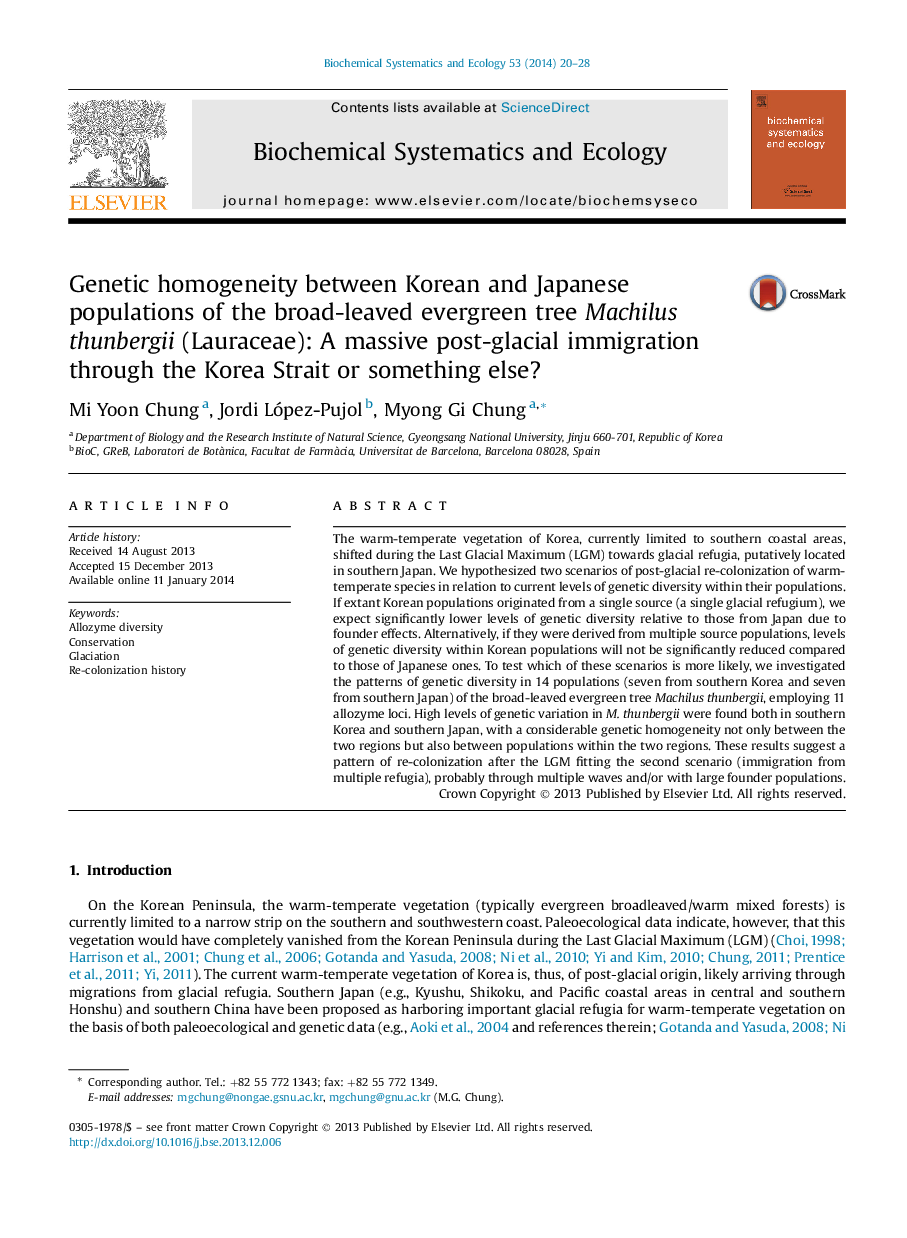| Article ID | Journal | Published Year | Pages | File Type |
|---|---|---|---|---|
| 1354318 | Biochemical Systematics and Ecology | 2014 | 9 Pages |
•We examined levels and distribution of genetic diversity in Machilus thunbergii.•We found high levels of genetic variation both in southern Korea and southern Japan.•A considerable genetic homogeneity was found between the two regions.•These results suggest origin of Korean M. thunbergii from multiple sources in Japan.
The warm-temperate vegetation of Korea, currently limited to southern coastal areas, shifted during the Last Glacial Maximum (LGM) towards glacial refugia, putatively located in southern Japan. We hypothesized two scenarios of post-glacial re-colonization of warm-temperate species in relation to current levels of genetic diversity within their populations. If extant Korean populations originated from a single source (a single glacial refugium), we expect significantly lower levels of genetic diversity relative to those from Japan due to founder effects. Alternatively, if they were derived from multiple source populations, levels of genetic diversity within Korean populations will not be significantly reduced compared to those of Japanese ones. To test which of these scenarios is more likely, we investigated the patterns of genetic diversity in 14 populations (seven from southern Korea and seven from southern Japan) of the broad-leaved evergreen tree Machilus thunbergii, employing 11 allozyme loci. High levels of genetic variation in M. thunbergii were found both in southern Korea and southern Japan, with a considerable genetic homogeneity not only between the two regions but also between populations within the two regions. These results suggest a pattern of re-colonization after the LGM fitting the second scenario (immigration from multiple refugia), probably through multiple waves and/or with large founder populations.
